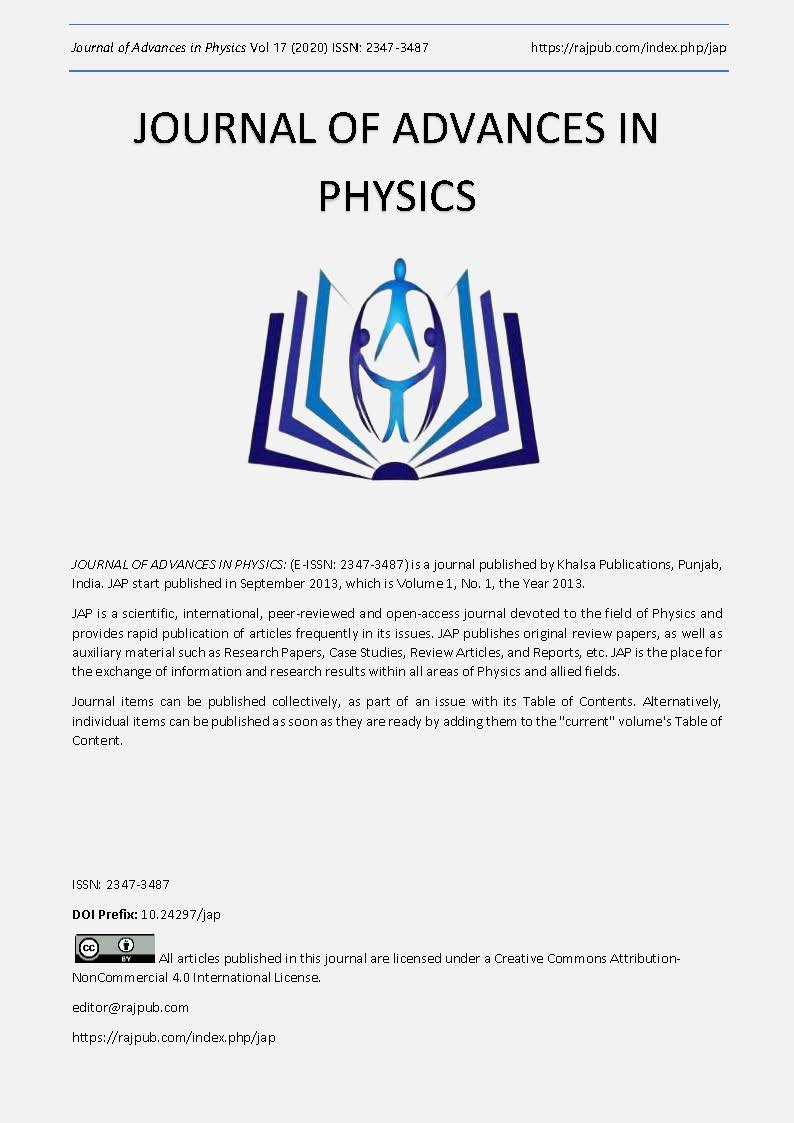Volumetric Analysis of 3-D Resistivity Distribution of Leachate Plume in Third Cemetery, Benin, South-South, Nigeria
DOI:
https://doi.org/10.24297/jap.v17i.8486Keywords:
Third Cemetery, Leachate, Groundwater, Volumetric Analysis.Abstract
This paper aims to carry out the volumetric analysis of 3-D resistivity distribution of leachate plume in Third Cemetery, Benin City, South-South, Nigeria. If not appropriately located or not sufficiently protected, cemeteries pose a significant health problem for the people (Fisher and Croupkamp,1993). Health concern about the possible impact of the cemeteries in Nigeria on the water supply has prompted this research. The research engaged 2-Dimensional and 3-Dimensional imaging (tomography) to investigate the presence and migration of leachate plumes in the cemetery and computation of time-lapse to detect the time rate of migration in both the vertical and horizontal directions. The geoelectric models obtained for the surveys displayed leachate plumes starting from the laterite (the burial environment) down to the sandy formation (the regional water supply source). The leachate plumes presence in the sand bed is modeled and described as shown in the 2-D and 3-D displays. This study showed that parts of the cemetery had been contaminated. This contamination was also observed to have infiltrated into the aquifer in the cemetery. 3-D block model, using Voxler 4.0 software was employed to carry out the volumetric analysis of the 3-D resistivity distribution of leachate plume in the Third Cemetery.
Downloads
References
Anthony Ravindran, A. I. and Mohd. Abdul Kadar Prabhu H. (2012). Groundwater Exploration Study using Wenner-Schlumberger Electrode Array through W-4 2D Resistivity Imaging Systems at Mahapallipuram, Chennai, Tamilanadu, India. Research Journal of Recent Sciences. 1(11) 36-40.
Borstel, C.L. and Niquette, C. (2000). Testing Procedure for Historic Cemeteries; Cultural Resource Analysts, inc.: Lexington, KY, USA.
Canninga, L. and Szmigina, I. (2010). Death and disposal: The universal, environmental dilemma. J. Market. Manag. 26, 1129-1142.
Dent, B. B. and Knight, M. J. (1998). Cemeteries: A special kind of landfill. Groundwater: Sustainable Solutions, Conference of the International Association of Hydro geologists, Melbourne, pp. 451–456
DOC (2016). Cemeteries, Burials and the Water Environment; A good practice guide for applicants and planning authorities when planning cemetery developments or extensions. Practice guide. Version 1.1. NIEA Natural Heritage Division, Belfast BT7 2JA.
Engelbrecht, P. (2010). Ground Water Pollution from Cemeteries—A Case Study. In Proceedings of Environmental: Situation and Perspectives for the European Union, Porto, Portugal, 6–10.
Ibhadode, C. A. E., Dirius, A. R. and Akhimien (2017). Adequacy or otherwise of cemetery space for sustainable human body disposal in Benin City, Nigeria. Ethiopian Journal of Environmental Studies & Management, 10 (5): 566 – 571.
Idehen, O (2018). Time Lapse Geoforensic Investigation of Leachate Plume Migration from Active Cemetery in Benin City, Nigeria. Ph.D. Thesis, University of Benin.
Idehen, O and Ezenwa,IM (2019). Influence of Third Cemetery Location on the Quality of Domestic and Groundwater Resources in Benin City, Nigeria. Journal of Applied Sciences and Environmental Management. Vol.23(1)05–11. ISSN 1119-8362. DOI: https://dx.doi.org/10.4314/jasem.v23i1.1
Idehen, O (2019) The Impact of Typical Cemetery on Groundwater using both Geophysical Techniques and Physicochemical analyses of Water in South-South, Nigeria. International Journal of Applied Science; Vol.2, No. 2; 2019. ISSN 2576-7240 E-ISSN 2576-7259. https://doi.org/10.30560/ijas.v2n2p12
Ikhile, C. I. and Oloriode, D. O. (2011). Impact of climate change on underground-water resources development in Benin-Owena River basin, Edo State, Nigeria: case study. EuropeanJournal of Scientific Research, 63(2): 272 – 278.
Ikhuoria, I. A. (1987). Urban land use patterns in traditional Nigeria City: A case study of Benin City. Land use policy, Great Britain, 4 (1): 62–75.
Jonker, C. and Olivier, J. (2012). Mineral Contamination from Cemetery Soils: Case Study of Zandfontein Cemetery, South Africa. Int. J. Environ. Res. Public Health, 9:511-520; DOI: 10.3390/ijerph9020511
Kim, K. H., Hall, M. L., Hart, A. and Pollard, S. J. (2008). A survey of green burial sites in England and Wales and an assessment of the feasibility of a groundwater vulnerability tool. Environ. Technol. 29, 1-12.
Loke M. H. (2014). Electrical Imaging surveys for Environmental and Engineering Studies. A Practical Guide to 2-D and 3-D Surveys.
Spongberg, A. L. and Becks, P. (2000). Organic Contamination in Soils Associated with Cemeteries. Journal of Soil Contamination 9 (2), 87–97.
Short K. and Stauble A. J. (1967). Outline of the Geology of Niger Delta. Am Assoc Petroleum Geologists Bull; 51: 761pp.
Williams, A., Temple, T., Pollard, S., Jones, R. and Ritz, K. (2009). Environmental considerations for common burial site selection after pandemic events. In Criminal and Environmental Soil Forensics; Ritz, K., Dawson, L., Miller, D. Eds.; Springer: The Netherlands; pp. 87-101.
Downloads
Published
How to Cite
Issue
Section
License
 All articles published in Journal of Advances in Linguistics are licensed under a Creative Commons Attribution 4.0 International License.
All articles published in Journal of Advances in Linguistics are licensed under a Creative Commons Attribution 4.0 International License.




